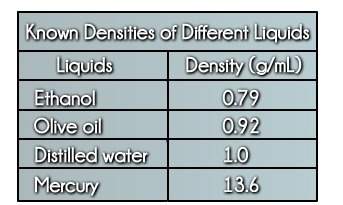
Physics, 23.03.2020 01:30, ashtonbillups
Two oppositely charged parallel plates separated by an insulator creates a capacitor. When a conductor connects the two plates, the
Capacitor will discharge. This can best be explained by which of these,
Both plates have electrons that are released as the capacitor discharges.
There is a current in the plates that is released when the capacitor
discharges
The insulator has less resistance than the conductor allowing the capacitor
to discharge
There is an electric potential between the plates which is released as the
capacitor discharges
Submit
Hint
What do we know about opposite charges?
Electrical and Magnetic Forces

Answers: 2
Other questions on the subject: Physics


Physics, 21.06.2019 20:30, blessingjessica
Air enters a compressor operating at steady state at 1.05 bar, 300 k, with a volumetric flow rate of 93 m3/min and exits at 12 bar, 400 k. heat transfer occurs at a rate of 15.5 kw from the compressor to its surroundings. assuming the ideal gas model for air neglecting kinetic potential energy effects, determine the power in put in kw.
Answers: 2

Physics, 21.06.2019 21:00, myalee1419
To protect all four receptacles on a branch circuit that surrounds a swimming pool, you would install which of the following configurations? a. gfci feed-through receptacle at the end of the load's circuit b. gfci-terminated receptacle at the beginning of the load's circuit c. gfci feed-through receptacle at the beginning of the load's circuit and the other receptacles connected to the load side of that receptacle d. gfci-terminated receptacle at each end of the load's circuit
Answers: 3

Physics, 21.06.2019 22:30, mirellaenriquez5529
Follow these directions and answer the questions. 1. shine a pencil-thin beam of light on a mirror perpendicular to its surface. (if you don't have a laser light as suggested in the video, you can make a narrow beam from a flashlight by making a cone from black construction paper and taping it over the face of the flashlight.) how does the light reflect? how does the relationship of incident to reflected ray relate to the reflection of water waves moving perpendicular to a barrier? 2. shine a pencil-thin beam of light on a mirror standing on a sheet of paper on the table (or floor) so that you can mark the incident ray and reflected ray. (you can support the mirror from the back by taping it to a wooden block.) 3. mark a line on the paper representing the reflective surface. (the reflective surface of a mirror is usually the back edge.) 4. draw a dashed line perpendicular to the mirror surface at a point where the incident and reflected ray meet. this perpendicular is called a normal to the surface. 5. measure the angles between the rays and the normal. the angle of incidence is the angle formed by the incident ray and the normal to the surface. the angle formed by the reflected ray and normal is called the angle of reflection (r). what is the angle of incidence? what is the angle of reflection? 6. repeat for several different angles. (see report sheet for details.) what appears to be the relationship between the angle of incidence and angle of reflection? in science 1204, what was the relationship for these two angles made by the reflection of waves in a ripple tank? 7. roll a ball bearing so that it hits a fixed, hard surface (a metal plate) at several angles (including head-on). observe the way in which the ball bearing reflects. what generalization can you make about how a ball bearing reflects from a wall? have you proved that light can only behave like a wave?
Answers: 1
Do you know the correct answer?
Two oppositely charged parallel plates separated by an insulator creates a capacitor. When a conduct...
Questions in other subjects:


Mathematics, 26.06.2019 17:40


History, 26.06.2019 17:40



English, 26.06.2019 17:40


History, 26.06.2019 17:40







